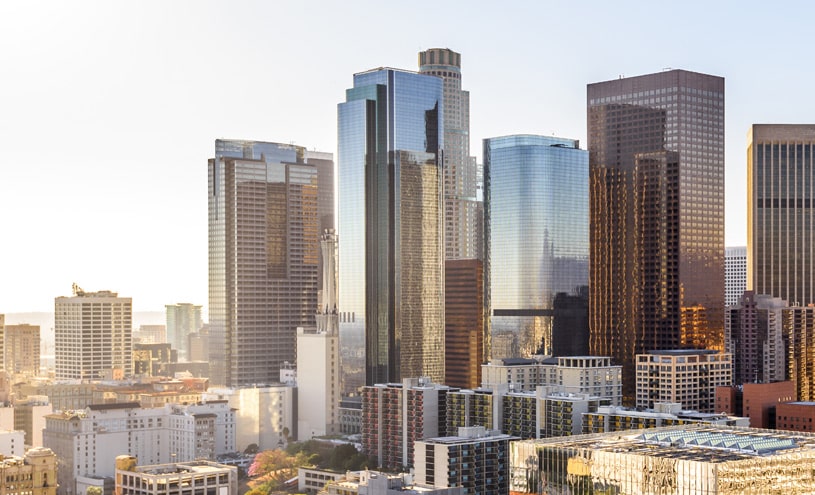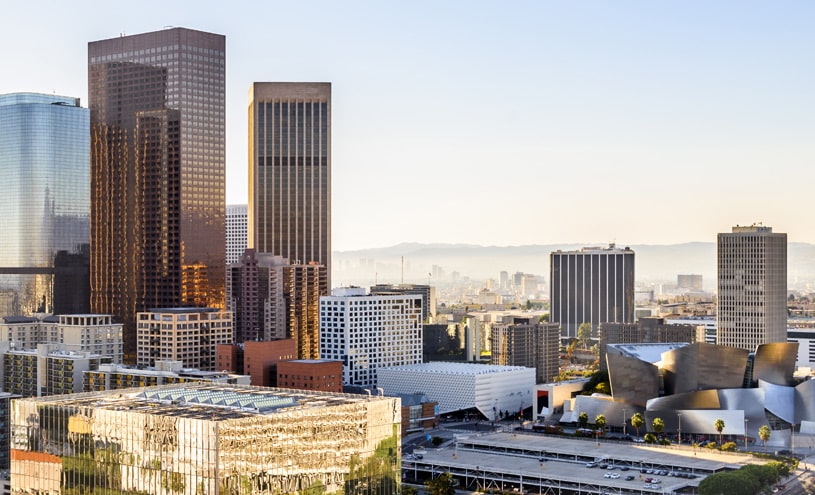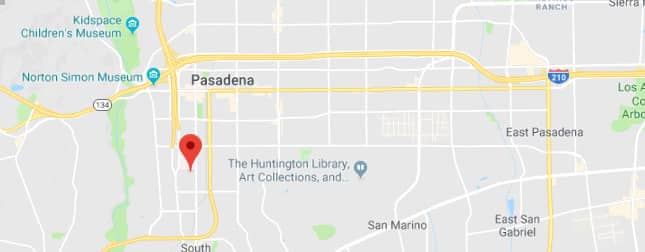 Rhinoplasty, commonly known as a nose job, is a popular cosmetic procedure that aims to improve the appearance and function of the nose. Despite its widespread popularity, there are still many misconceptions and myths surrounding rhinoplasty that can deter individuals from considering it as an option. In this blog post, we will address some of the common concerns and myths about rhinoplasty to help you make an informed decision about this procedure. Dr. Eric Yavrouian provides rhinoplasty to patients in Glendale, Pasadena, Burbank, Greater Los Angeles, Beverly Hills, CA, and surrounding communities.
Rhinoplasty, commonly known as a nose job, is a popular cosmetic procedure that aims to improve the appearance and function of the nose. Despite its widespread popularity, there are still many misconceptions and myths surrounding rhinoplasty that can deter individuals from considering it as an option. In this blog post, we will address some of the common concerns and myths about rhinoplasty to help you make an informed decision about this procedure. Dr. Eric Yavrouian provides rhinoplasty to patients in Glendale, Pasadena, Burbank, Greater Los Angeles, Beverly Hills, CA, and surrounding communities.
Rhinoplasty Is Solely for Cosmetic Purposes
A widespread belief exists that rhinoplasty’s primary function is to enhance the aesthetic appeal of the nose, positioning it as a procedure pursued exclusively for vanity’s sake. However, this narrative overlooks the multifaceted reasons individuals opt for rhinoplasty, extending well beyond superficial modifications. Rhinoplasty plays a crucial role in addressing and correcting a range of medical concerns. It serves as a transformative intervention for those struggling with breathing complications, a scenario often resulting from structural abnormalities within the nasal passage. Individuals born with congenital defects that affect the nose’s form and function find rhinoplasty a path to not only aesthetic refinement but also to improved quality of life. Additionally, victims of nasal trauma, whether through accidents or injuries, may require rhinoplasty to restore both the physical integrity and appearance of their nose. This procedure, therefore, stands as a testament to the intersection between aesthetic desires and medical necessity. By consulting with a qualified plastic surgeon, patients are afforded an opportunity to explore how rhinoplasty can cater to their unique situation, whether the motivation is rooted in cosmetic enhancement, functional improvement, or a combination of both. This broader understanding of rhinoplasty’s applications encourages a more inclusive view, acknowledging it as a procedure that transcends purely cosmetic aspirations to encompass vital medical and psychological benefits.
The Pain and Recovery Process Is Intolerable
The notion that the recovery from rhinoplasty is overwhelmingly painful is one of the more pervasive myths that cause undue concern among prospective patients. It’s crucial to understand that while rhinoplasty involves surgical intervention, the field of plastic surgery has seen significant strides in minimizing discomfort and expediting recovery times. Modern anesthesia techniques, coupled with cutting-edge approaches to pain management, have greatly reduced the impact of post-surgical discomfort.
Patients typically experience mild to moderate discomfort in the immediate aftermath of the procedure, a sensation that is effectively managed through medications prescribed by the attending surgeon. Beyond pharmacological interventions, the implementation of a tailored post-operative care regimen plays a pivotal role in ensuring a smooth recovery. Adhering to these guidelines helps mitigate discomfort and accelerates the healing process.
It’s also worth noting that individual experiences with pain and recovery vary. Surgeons work closely with their patients to set realistic expectations and provide comprehensive support throughout the healing journey. This personalized approach ensures that each patient’s recovery strategy is optimized according to their specific needs, further alleviating the burden of post-operative recovery.
By dispelling the myth of an intolerable recovery process, individuals can approach rhinoplasty with a more balanced perspective, recognizing the procedure as a manageable and worthwhile endeavor for those seeking to improve the appearance and functionality of their nose. The focus thus shifts from undue apprehension about pain to a more informed understanding of the procedure’s benefits and the sophisticated measures in place to ensure patient comfort.
Your Nose Will Look Unnatural or Overdone
The fear that rhinoplasty results in an exaggerated or artificial appearance is a significant concern for many contemplating this procedure. Yet, this anxiety often stems from a limited exposure to outdated surgical practices or sensationalized media portrayals. In reality, the evolution of surgical techniques and a deeper understanding of facial aesthetics have enabled plastic surgeons to create outcomes that are indistinguishably natural and harmoniously aligned with the individual’s unique facial features.
The goal of modern rhinoplasty is not to standardize beauty but to tailor the procedure to the patient’s specific anatomy and aesthetic desires. Surgeons now employ sophisticated methods that consider the balance and proportion of the nose in relation to the entire face, ensuring that the modifications enhance the patient’s natural beauty without appearing forced or incongruous.
During the initial consultation, a detailed discussion about what constitutes a desirable outcome is crucial. This dialogue includes the use of imaging technology to preview potential results, setting a realistic expectation for the post-operative appearance. Such preparatory steps are integral to demystifying the process and dispelling the fear of an unnatural outcome.
Moreover, selecting a surgeon whose aesthetic sense aligns with your vision is paramount. Reviewing before-and-after photos of previous patients can provide insight into the surgeon’s skill and aesthetic approach, offering reassurance that your desired outcome is attainable.
Ultimately, the advancements in rhinoplasty techniques have significantly reduced the likelihood of an unnatural or overdone appearance, affirming the procedure’s ability to enhance facial harmony subtly and beautifully.
Rhinoplasty Results Are Immediate
Many individuals enter into rhinoplasty with the expectation of seeing their new nose shape right after the bandages come off, only to discover that the journey to the final result is a gradual one. The immediate aftermath of the procedure is often characterized by swelling and bruising, which can obscure the changes made during surgery. This initial period is not indicative of the finished outcome. As the healing process unfolds over the following weeks and months, the true alterations will start to emerge more clearly.
During the initial phase of recovery, it’s not uncommon for patients to feel a mixture of anticipation and impatience. However, it’s important to understand that the body needs time to adapt to the structural changes made to the nasal framework. Swelling is a natural response to the surgical manipulation and varies from person to person. For most, the majority of swelling diminishes within the first month, yet subtle swelling can persist for up to a year, gradually revealing the nuanced refinements of the procedure.
Engaging in follow-up care and adhering to your surgeon’s guidance can facilitate a smoother recovery and better align your expectations with the realistic timeline of healing. This phase is a crucial component of the rhinoplasty process, ensuring that when the final contours of the nose become apparent, they reflect the goals discussed during the pre-surgical consultations. Understanding this timeline helps in appreciating the gradual emergence of the anticipated improvements, reinforcing the notion that patience and time are key contributors to the ultimate success of rhinoplasty.
The Risks Outweigh the Benefits
Embarking on the rhinoplasty journey often involves weighing the potential risks against the anticipated benefits, a consideration that can evoke apprehension among many considering this procedure. While it’s undeniable that any surgical intervention comes with inherent risks, the narrative that these risks overshadow the benefits of rhinoplasty doesn’t hold up under closer scrutiny. Advances in medical techniques and surgical safety have dramatically reduced the incidence of complications, rendering rhinoplasty a procedure with a high satisfaction rate among patients.
The key to minimizing risks lies in the careful selection of a qualified and experienced plastic surgeon. Specialists in the field employ meticulous planning and precision to not only achieve the desired aesthetic and functional outcomes but also to ensure patient safety throughout the process. Comprehensive pre-operative assessments are conducted to identify any factors that might increase the likelihood of complications, allowing for proactive measures to be implemented.
Engagement in an open and honest dialogue with your surgeon about your medical history and expectations further serves as a critical step towards a successful outcome. This partnership enables the surgeon to tailor the procedure to your specific needs, while also providing you with a clear understanding of the realistic benefits and potential risks.
In essence, while acknowledging the risks associated with rhinoplasty is important, it’s equally crucial to recognize that with advancements in surgical techniques and a judicious choice of surgeon, the benefits of improved nasal function and enhanced self-confidence often far surpass the potential downsides.
It’s Impossible to Correct a Bad Rhinoplasty
Contrary to popular belief, correcting an unsatisfactory rhinoplasty result is not out of reach. Revision rhinoplasty emerges as a beacon of hope for those distressed by the outcome of their initial procedure. This specialized form of rhinoplasty requires a surgeon with a specific set of skills and extensive experience in navigating the complexities of secondary nose surgeries. It involves precise techniques aimed at addressing both aesthetic and functional issues that did not meet the patient’s expectations or objectives the first time around. Identifying a plastic surgeon with a distinguished track record in revision cases is critical. Such expertise allows for the careful assessment of the nasal structure, consideration of the scar tissue, and the creation of a strategic surgical plan tailored to correct previous missteps. Success in revision rhinoplasty hinges on the surgeon’s ability to blend artistry with surgical precision, ensuring that the final results align more closely with the patient’s vision for their nose, thereby restoring both their appearance and confidence.
For more information about treatments and procedures by Facial Plastic and Reconstructive Surgeon, Dr. Eric J. Yavrouian, serving patients in and around Glendale, Pasadena, Burbank and the Greater Los Angeles, CA area call 818-241-2150 or click here to contact him for a consultation.






